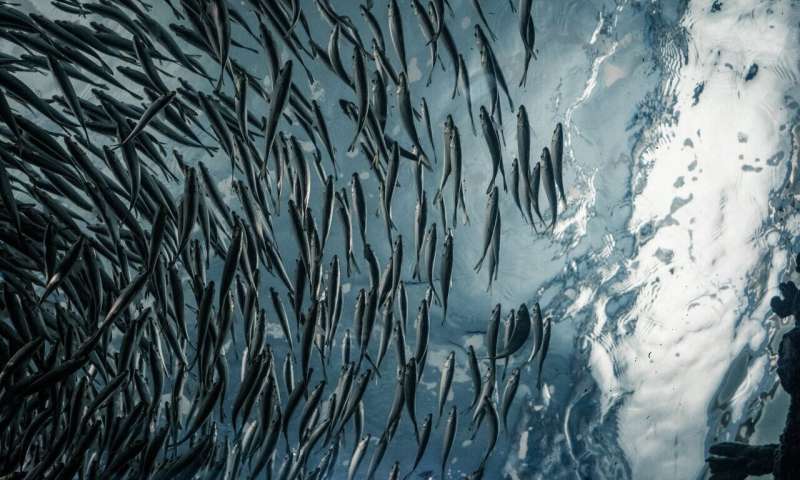Stickleback study reveals 'parallel' evolution

Animal species in different parts of the world can evolve in "parallel" in response to similar conditions, according to a new study of fish.
Researchers examined separate populations of sticklebacks across two continents and found striking evidence of parallelism.
Sticklebacks provide a powerful "natural experiment" to test parallelism because they descend from marine fish (some still live in oceans) but some have adapted to freshwater environments across the northern hemisphere.
Working in Alaska, British Columbia, Iceland and Scotland, the research team—led by the University of Nottingham and including the University of Exeter—sampled more than 1,300 fish from 73 freshwater lake populations and four marine populations.
They used a genetic technique known as RAD-sequencing to quantify the frequency of specific alleles, measured a range of physical characteristics (including body shape and degree of body armor), and also quantified various aspects of the physical environment in which they lived.
They then explored the link between the genetic measures and morphological (size and shape) and environmental variation.
The found that:
- Similarities in morphology and environment can predict genomic parallelism.
- Originating from the same pool of genetic variation is the biggest determinant for finding genomic parallelism.
- Similarity in the environment can be a better indicator of parallelism in the genome of individuals from those populations than similarity in their morphology.
Dr. Isabel Magalhaes, now at the University of Roehampton, said: "By connecting the evolution of parallelism more explicitly to environmental and morphological variation, our study has given us a better idea of the environmental and genetic backgrounds against which we would expect to find similar looking sticklebacks, even across large geographic scales.
"We learned for example that sticklebacks inhabiting water with pH 5 are likely to have similar body armor, and that this was achieved through the re-use of the same genomic regions, even if one population is in Alaska and the other in Scotland.
"This information could then be used to predict how populations colonizing new environments might look, which is particularly important as species are being displaced to new areas due to fast climate change."
Dr. James Whiting, of the University of Exeter, said: "A particularly interesting finding here is that similar lake environments, and so similar natural selection, are a better indicator that the same genes might be evolving than looking at fish from different lakes that simply look alike.
"This is likely because fish from similar environments evolve similar characteristics that are hard to observe, like physiological traits.
"This is important because it tells us about the kinds of species characteristics that we may expect to evolve and adapt in repeatable ways."
The paper, published in the journal Nature Ecology and Evolution, is titled "Intercontinental genomic parallelism in multiple three-spined stickleback adaptive radiations."
More information: Isabel S. Magalhaes et al. Intercontinental genomic parallelism in multiple three-spined stickleback adaptive radiations, Nature Ecology & Evolution (2020). DOI: 10.1038/s41559-020-01341-8
Journal information: Nature Ecology & Evolution
Provided by University of Exeter















